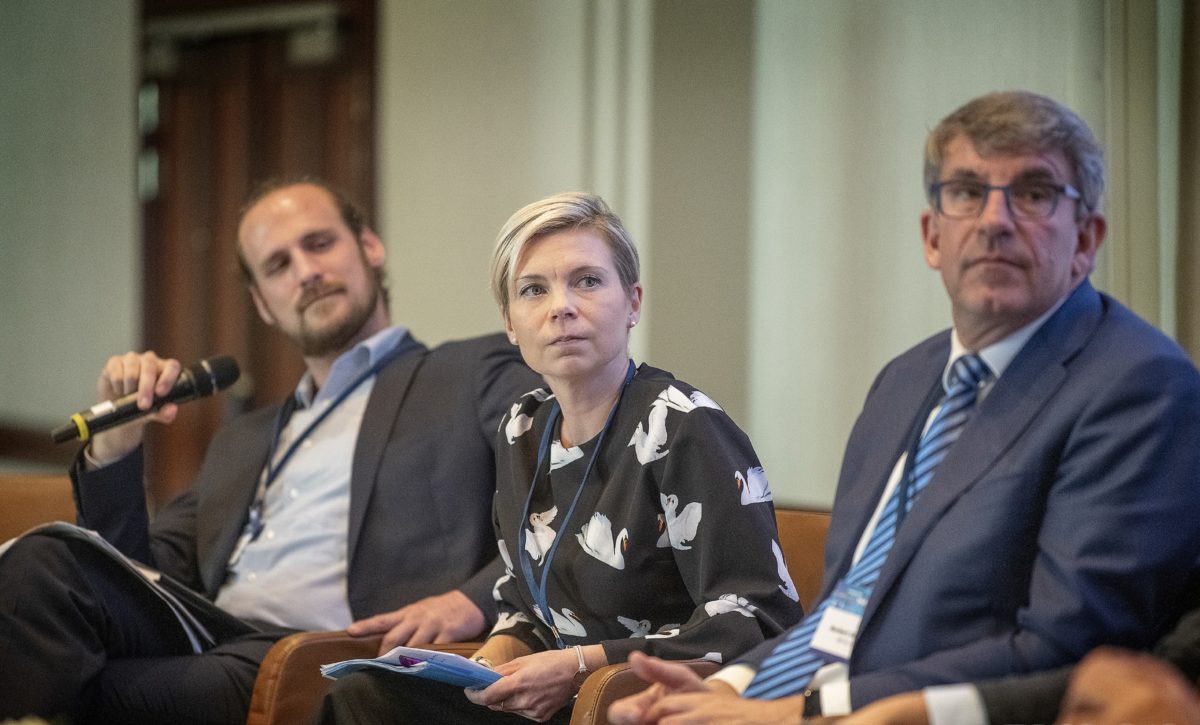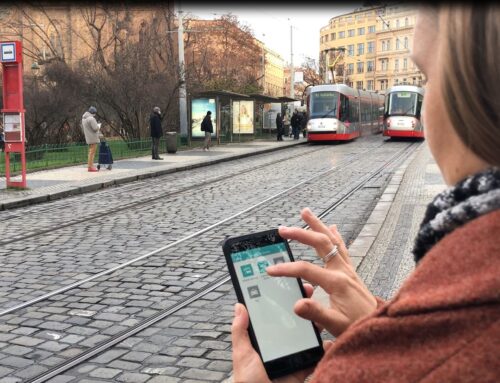What does “Mobility as a Service” (MaaS) look like on other continents? What are the major legislative hurdles and how will the MaaS concept change in the near future? All these questions and more are answered by our interviewee, Piia Karjalainen, Senior Manager for MaaS at ERTICO – ITS Europe, who is responsible for coordinating the MaaS Alliance, an innovation cooperation platform with almost 80 members comprising representatives of companies, research organisations, ministries, regional authorities and cities. Also MyCorridor and other European research projects are collaborating with the MaaS Alliance, which was founded in October 2015.
What does the MaaS Alliance specifically? Please give us an overview on the tasks.
The Alliance brings together various stakeholders to discuss the implementation of MaaS, as well as to raise awareness and promote the concept as a whole. Its main areas of focus are regulatory issues, business and governance models, and the technical interoperability of existing MaaS solutions. Even though the Alliance was founded less than four years ago by stakeholders from mostly Western and Northern Europe, the group has become a global reference point for MaaS, attracting members from Australia, Japan and the United States.
Since you are the expert, please give us your definition of the MaaS concept.
If I were to speak as a representative of the MaaS Alliance, I would suggest checking the official definition on our website. However, since I am speaking in a personal capacity, I would say that MaaS is basically all about integrating different transport modes and services. It’s an one stop shop for your personal mobility. . Another key aspect of the MaaS concept is the availability of high-quality, real-time information through the integration of customer processes during the planning, booking, ticketing, and payment phases.
Since the MaaS Alliance has partners from all over the world, does the European notion of MaaS differ from the non-European approach?
First of all, it is important to stress that in order to bring value, MaaS must make use of the best “local ingredients”, which essentially means that MaaS solutions should always be tailored towards a specific market and match local supply and demand. Even though the MaaS concept is based on the pillars that I have mentioned, some differences between Europe and the rest of the world still exist.
In Europe, the desire for more sustainable transport solutions and the reduction of CO2 emissions is very strong, which is fantastic since the MaaS concept is based on widening and extending the use of our already well-developed public transport systems.
When you are discussing MaaS with North Americans, the focus is often more on shared and personalised transport services, and in the link of automation and MaaS. In China on the other hand, MaaS is sometimes used to mean shared mobility modes and typically relates to the use of shared electric vehicles in the transport system.
Thanks to these different viewpoints, the inclusion of stakeholders from other continents in the MaaS Alliance has proven extremely beneficial to broadening our horizons and taking on board different approaches.
The MaaS Alliance has a great overview of recent technical developments. What innovations can the user expect in the fast-moving mobility sector in the next few years?
In our opinion, one of the most problematic area is ticketing, payment and validation of tickets, so we expect to see new, innovative solutions arriving on the market, such as the recent collaboration between and Kisio and Mastercard.
Another aspect is the combination of mobility solutions with other sectors. We might arrive at a point that housing and mobility will be increasingly intertwined. We have already noted several pilots in the Baltic Sea region, like the EU-funded Mamba Project, which include a combination of rent and access to public transport and the shared economy. This approach presents an entirely new dimension for urban planning and the whole concept of transport.
In terms of technology, blockchain has the potential to play a bigger role, even though it is currently considered as merely a buzzword. Nevertheless, in the coming years, I would not be surprised to see it facilitating the shared use of vehicles and creating an independent financial ID of the vehicle itself, so that we are able to gain a clear view of the differences between fleets of passenger cars and their managers. This is essential, because the idea of renting out your autonomous vehicle and taxi, as Tesla founder Elon Musk suggests, requires a reliable way of integrating the vehicles into the MaaS system.
Which are the main challenges that the transport industry, the authorities and cities are facing in the deployment of new mobility solutions such as MaaS?
This maybe sounds a bit clichéd but building trust in the MaaS ecosystem is an essential task because the roles of the public authorities and private service providers are starting to blur. The public sector has traditionally assumed the dominant position in the relationship since it controlled the market by providing transport services. Nowadays, however, we face a lack of public funding as more innovative forms of urban mobility providers come from the private sector. Therefore, the public sector has to recognise private companies as trustworthy partners that can help to identify synergies and even bolster public funding in the future.
One challenge for the public sector side might be that MaaS is not just a tool for selecting a mode of transport but represents a product that is heavily dependent on data policy and digitalisation. In order to guarantee functioning MaaS services, the public sector would need to build up its capacities and policies for good data management.
MyCorridor members are currently finding solutions for the exchange of data between EU countries to realise cross-border solutions for MaaS. Since data policy is an essential topic for our members, what is your take on possible future European legislative frameworks?
EU policy has its role to play, and there have been good initiatives from the European Commission. For example, the Commission Delegated Regulation 2017/1926 that establishes a network of national data access points in every Member State in order to gather data from transport authorities and operators, infrastructure managers and transport on demand service providers.
On the one hand, we definitely need some further clarifying regulatory actions from the Commission, backed up by Member States; on the other hand, commitment and the introduction of a code of conduct from the industry would be very helpful as well. Groups like the Maas Alliance can help to define the fastest and most efficient ways of finding solutions and common standards that pave the way for the implementation of MaaS throughout Europe and globally. In order to support and not to hinder the development of the industry, we recommend that standards are developed with iterative manners, to avoid extremely long duration between initiation and implementation of harmonisation process.
Since we are talking about EU legislation, which initiatives are currently slowing down the uptake of MaaS, which measures should be put in place to accelerate it, and how MaaS should be regulated?
Actually, we have studied this topic quite a bit and found that there is no regulation at the European level which is hindering MaaS at the moment in great extent. Many things could however be done differently in order to support MaaS. EU legislation should consider the topic of transport as a whole by focusing on the integration of different services. Thinking in silos should be avoided at all costs.
Another big problem is adverse national legislation that promotes the use of private cars, just like in Belgium with their favourable policy towards company cars. National legislation should promote environmentally friendly solutions and should be open to all modes of transport.
The MyCorridor project is running cross-border pilots across six countries. What do you think we could learn from this? How can these types of tests help others in the industry to implement or accelerate the adoption of MaaS?
I find this approach very interesting because the scalability of MaaS is very important, not only from the business but also from the user perspective. The MyCorridor project is doing a valuable job in providing us with initial insights into possible cross-border solutions, or at least what kind of bottlenecks would need to be removed in order to have a smooth roll-out of MaaS services. The MaaS Alliance is following the MyCorridor project with a great interest and learning from the results. We are keen to achieve a cross-border use of all mobility services as the optimum scenario for the effective functioning of the MaaS concept.
Check out further information about the MaaS Alliance on their homepage as well as their Twitter and LinkedIn account.







